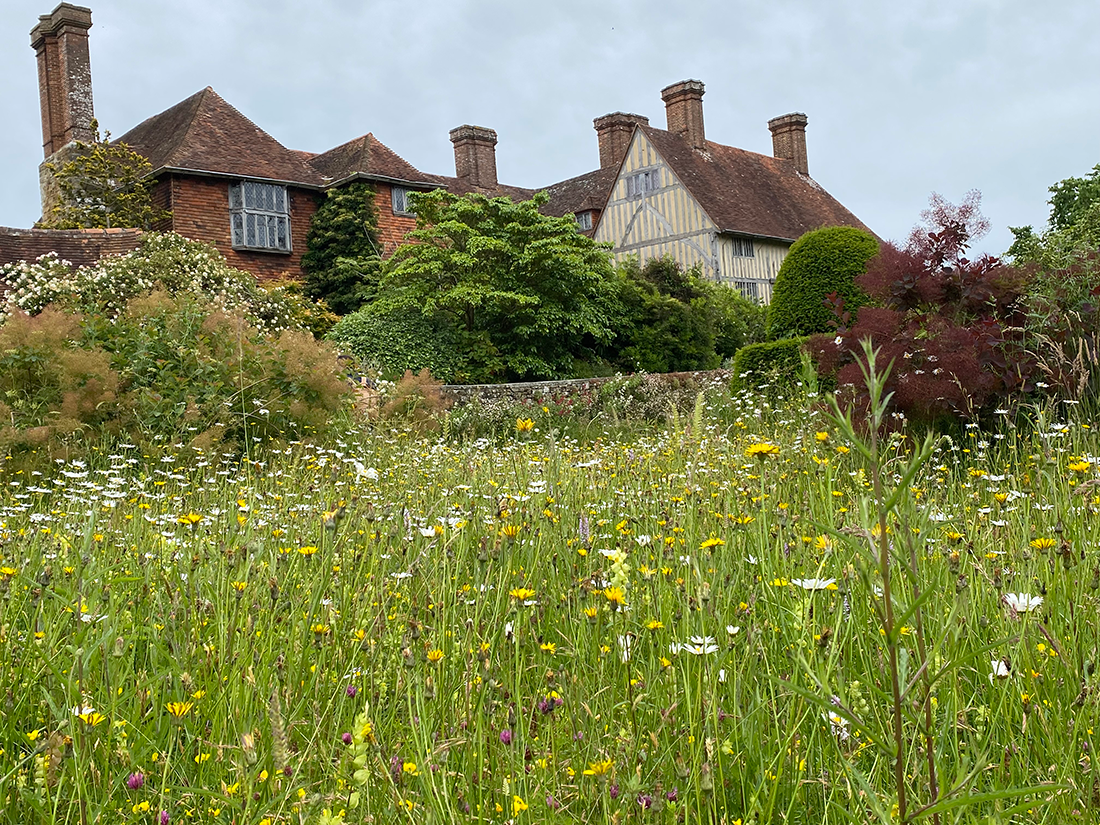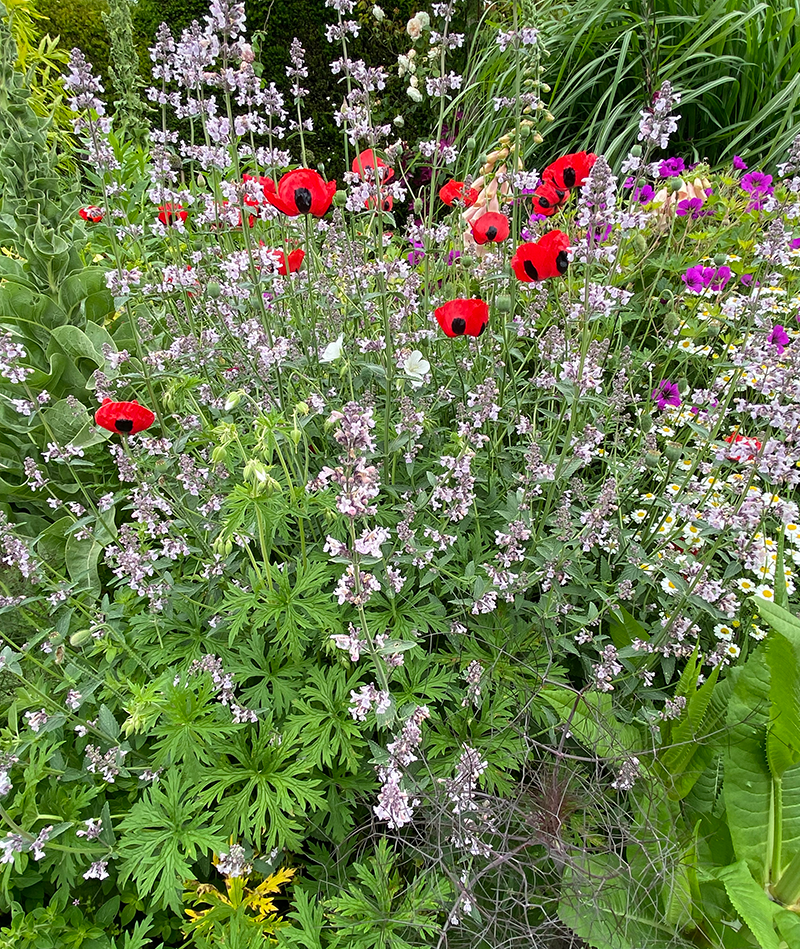
I have long wanted to visit Great Dixter and its celebrated gardens and I am excited as I arrive.
The house and gardens are the very personal, creative expression of the late Christopher Lloyd, his family, and his friend and head gardener Fergus Garrett.
Christopher’s father, Nathaniel, was a highly successful entrepreneur. The success of his colour printing firm allowed him to retire in 1909 at the age of 35. A passionate collector of antique furniture he bought Great Dixter in 1910 for £6000 with his wife Daisy. Nathaniel commissioned the then little known architect, Edwin Lutyens, to restore and enlarge the 15th century house. In 1911 Lutyens was asked to provide outline plans for the garden. The topiary was Nathaniel’s inspiration but the planting was devised by Daisy. Gertrude Jekyll, who often worked closely with Lutyens did not produce any planting plans but her influence on Daisy through her writing can be seen in the schemes with attention to the foliage, structure and colour co-ordinated sweeps of plants. Inspiration seems to have also been drawn form the writings of William Robinson whose emphasis on naturalistic planting using grasses and wildflowers are apparent in his own garden at Gravetye and can also be seen at Great Dixter.

Daisy and Nathaniel’s youngest son, Christopher Lloyd, would imbue the gardens at Great Dixter with a unique and particular voice. He gardened there with his mother until her death in 1972. As he experimented with planting at Great Dixter he gave practical expression to the mixed border which we take for granted today but in the 1950s seemed new and radical. The particular voice of Great Dixter’s gardens and its experimental nature brought Christopher Lloyd and Fergus Garrett together. The planting is informal with large swathes of colour in groups. The gardens are on a grand scale and bless you with immediate impressions which belie the detail and artistry of these living compositions making them so extraordinary. As you pay attention to the detail of the planting you enter into an exploration of the joy of these gifted plantsmen. Each garden room and border and the open sweep of the meadow areas with their delicate wild flowers moving gently in the breeze reminds you that you are sharing a private garden which has such life. The planting enfolds you. It is an intimate, personal experience which engages all your senses. This is a truly extraordinary place filled with beauty and blessing. To find out more and to plan your visit go to www.greatdixter.co.uk.